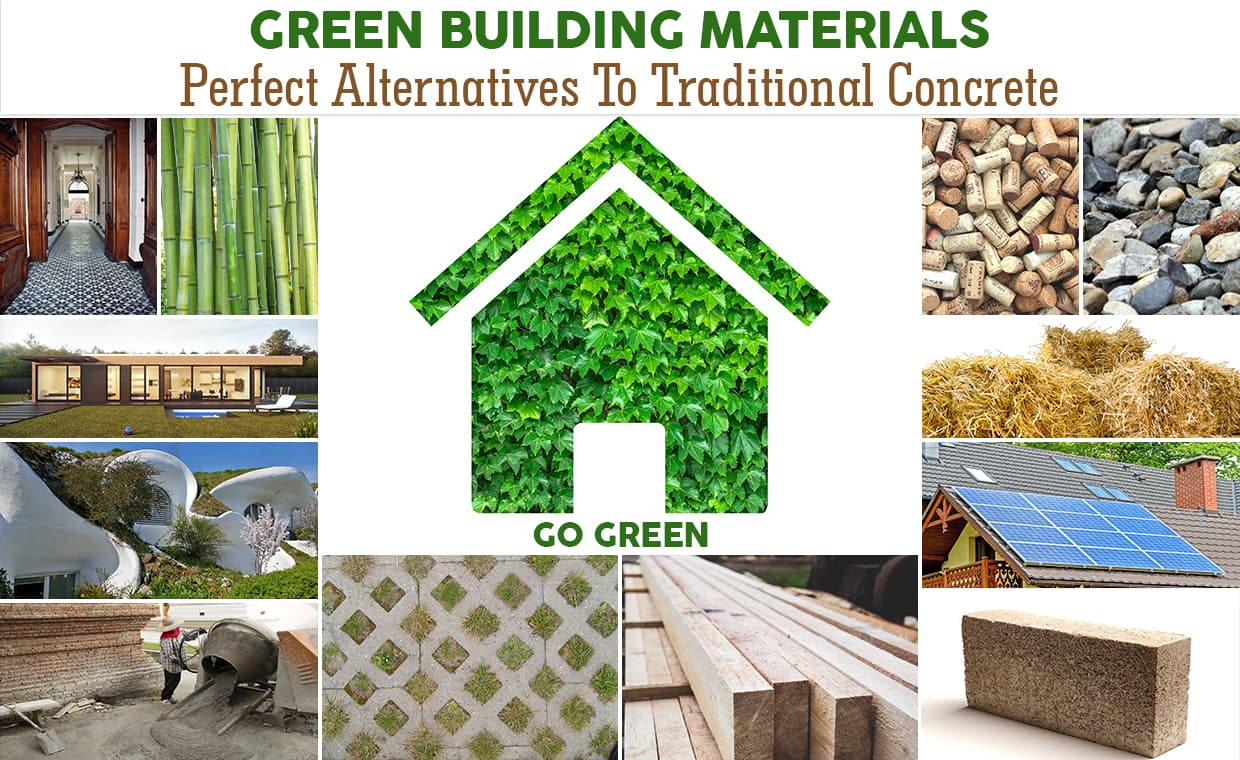
While the world has grown to rely on concrete as one of the most common building materials, humans should be aware that concrete may cause more harm than good to the environment. To give you an idea, did you know that the turning of raw materials into construction products each year consumes about 16 per cent of fossil fuels? If this doesn’t sound right, then what is the right way forward?
Well, the solution is the sustainable building, which has become a buzzword in the construction industry over the last few decades. Many designs, construction options, and multiple construction phases of a building were tried to succeed this concept of sustainable building, so that it encompasses and incorporates a variety of various environmental solutions. Finally, came the use of green construction materials, which stayed as an essential strategy in designing one of the accepted construction materials and structures.
Several builders and property owners are now incorporating environment-friendly materials and construction processes into their projects. Appraisers must be aware of these cutting-edge materials. So, here we’ve compiled a list of 12 such eco-friendly alternatives to concrete. These will not only play a critical part in ensuring that construction continues in such a way that it also supports our planet’s long-term sustainability.
Sustainable Alternatives – Green Building Material
The future of construction lies in building sustainable and green buildings. Building green not only helps to protect the environment, but also saves money in the long run. It may appear that identifying sustainable building materials is simple, but is it? Once concrete, steel, glass, and brick have been the primary building materials for many years. Will it be easy for one of the world’s most widely utilized construction materials to be replaced so easily? Maybe not? Maybe yes! It all depends on the meaningful progress man makes.
What is Green Building Material?
Green building materials are often known as eco-friendly materials. They are renewable materials, which are primarily organic and resistant to heat, humidity, and cold.
As a result, green building construction involves making the most efficient use of resources throughout the construction process. The objective is to build an energy-efficient, water-saving structure with a minimal carbon footprint by integrating a system of components and materials that operate in combination. While choosing suitable materials is an essential element of green construction, the optimal materials may not be forced upon and determined according to the owner’s demands.
Three Elements of Green Building Material
Though the construction of your home is an essential aspect of the process, the green building comprises much more. It’s a start-to-finish process that starts with the property. You choose, continue with the design of your ideal house, the materials and practices utilized during building, and end with how you run and maintain your dream home once it’s finished. You can use as many or as few of these components in your home’s design.
Likewise, you get to choose how environmentally conscious you want to be. Let’s have a look at the three most essential elements of green construction:
- Improving the efficiency of energy use.
- Improved water efficiency both inside and outside your house.
- Enhanced health and productivity of your family by improving the air quality.
Each element is made up of numerous components. So, for all this, there are different types of green building materials. Given below are 12 such picks.
Examples of Eco-Friendly Alternatives To Concrete
Every day, new types of environmentally friendly construction materials are discovered, changed, and developed. Our top 12 eco-friendly alternatives to concrete are as follows:
01. Green Concrete:
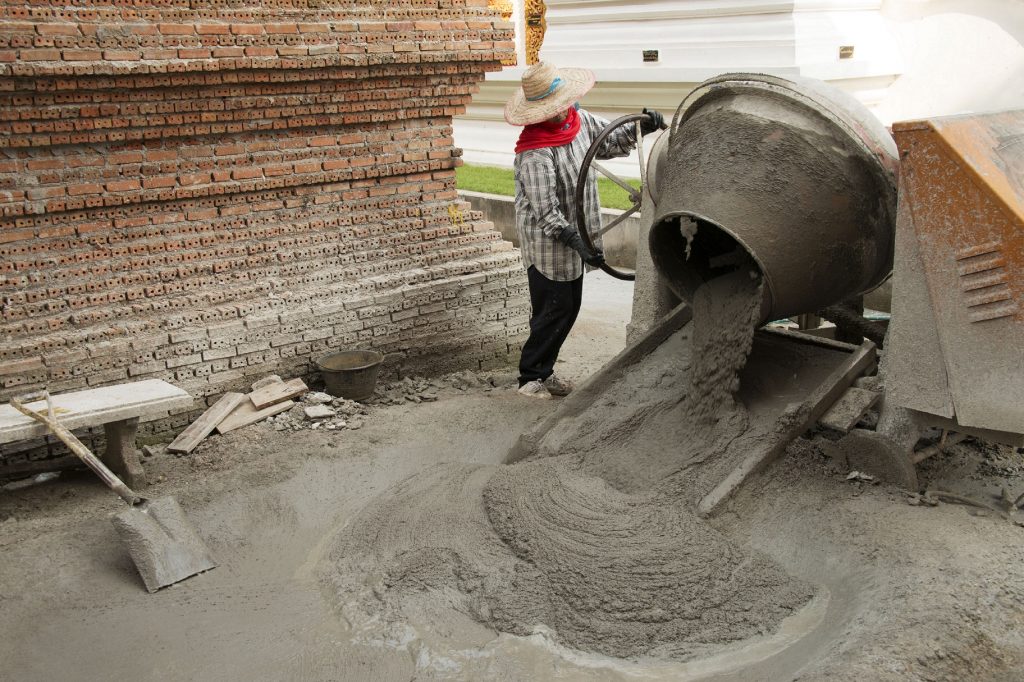
Green concrete is obtained by replacing cement or fine or coarse aggregate with waste material. Recycled demolition waste aggregate, recycled concrete aggregate, blast furnace slag, manufactured sand, glass aggregate, and fly ash are some too. High-volume fly ash concrete, ultra-high performance concrete, geopolymer concrete, and lightweight concrete are several types of green concrete developed by consuming the least energy.
02. Stones:

There is a rising interest in constructing beautiful, timeless, environmentally friendly houses with many materials and design alternatives competing for your attention. In today’s market, natural stone stands out as an ideal solution for satisfying all of your demands, while also improving the sustainability of your house.
You can make the most significant decisions for purchasing, installing, and preserving natural stone if you understand what makes it sustainable. Choosing natural stone indicates your commitment to environmental stewardship by actively conserving, repairing, or improving the natural environment. So, what makes stone long-lasting and better than concrete?
- Even in the absence of wear and tear, concrete has a natural tendency to crack. However, the more durable natural stone might be the answer to your doubt about how the stone is different from concrete.
- Stone is a natural product procured from the Earth and the first green construction material.
- It is exceptionally sturdy and withstands the test of time.
- If adequately cared for, it will last for years and repay you with its beauty.
- Stone is entirely recyclable and natural, unlike concrete, and can serve a wide range of applications and purposes during its lifetime.
03. Modular Homes As A Eco-Friendly Alternatives To Concrete:
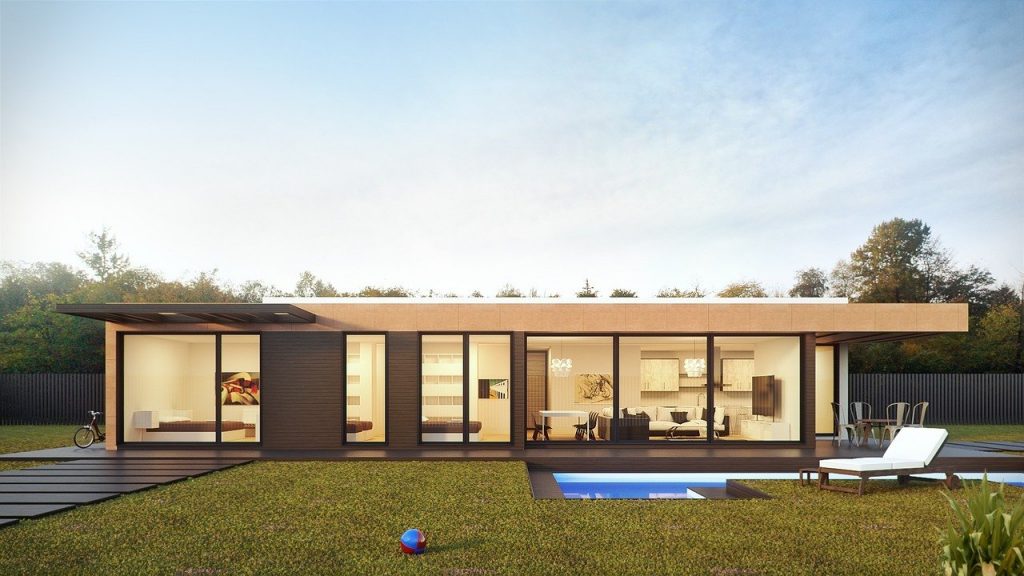
Prefab homes have had a poor rap in the past century. Still, it’s time to reconsider the prefabricated house, now known as a modular home. Modular homes today frequently exhibit the most recent advances in green construction and technology, such as net-zero emissions, solar panels, rainwater systems, and the use of recycled materials. Let’s investigate further why the green future could be modular:
- Modular buildings frequently employ the most recent recycled construction materials for interior walls, insulation, and roofing.
- It focuses on clean and green energy and the use of non-toxic or low VOC materials.
- It conserves water.
- Self-sufficient modular houses may save a family’s energy consumption by up to 72%.
- One of the most significant advantages of modular homes is waste management.
Reusing and recycling materials is considered an essential value in sustainable design. Shipping container architecture is characterized by a similar concept. Visit here to learn more about it – Boxman containers, an innovative solution for sustainable modular and container-based construction that promotes eco-friendly living and reduces environmental impact.
04. Earthen Structures:
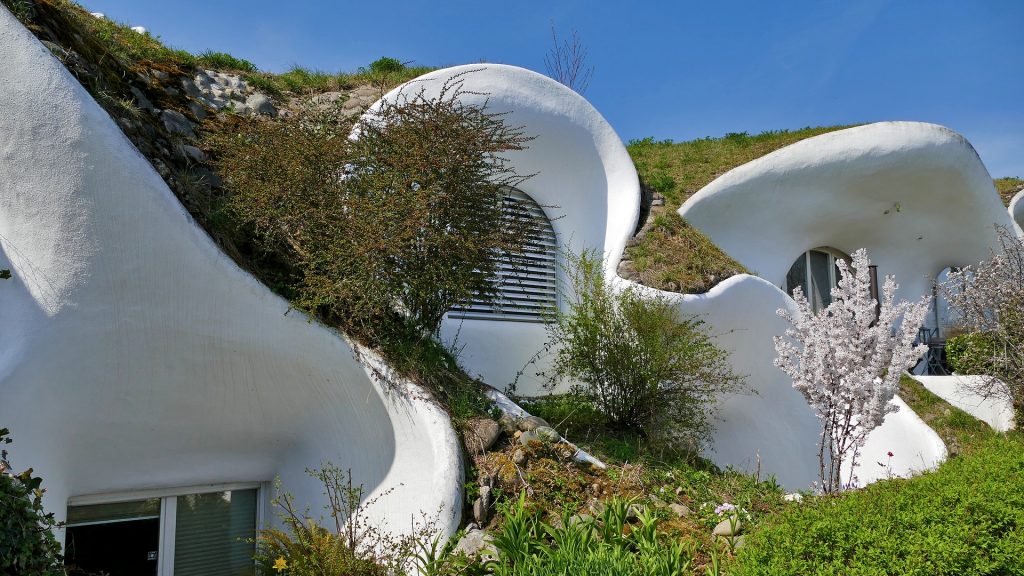
Since ancient times, earthen materials such as adobe, cob, and rammed Earth have been utilized for construction. Here the Earth is fortified with chopped straw, grass, and other fibrous materials to increase its strength and durability. Structures made of adobe or cob can still be found in certain isolated places. What are the advantages it offers?
- It’s a fantastic insulator for off-grid life.
- Rammed earth buildings last longer.
- It is incredibly resistant to moisture.
- It has a good value for its fire resistance property.
05. Organic Tiles:
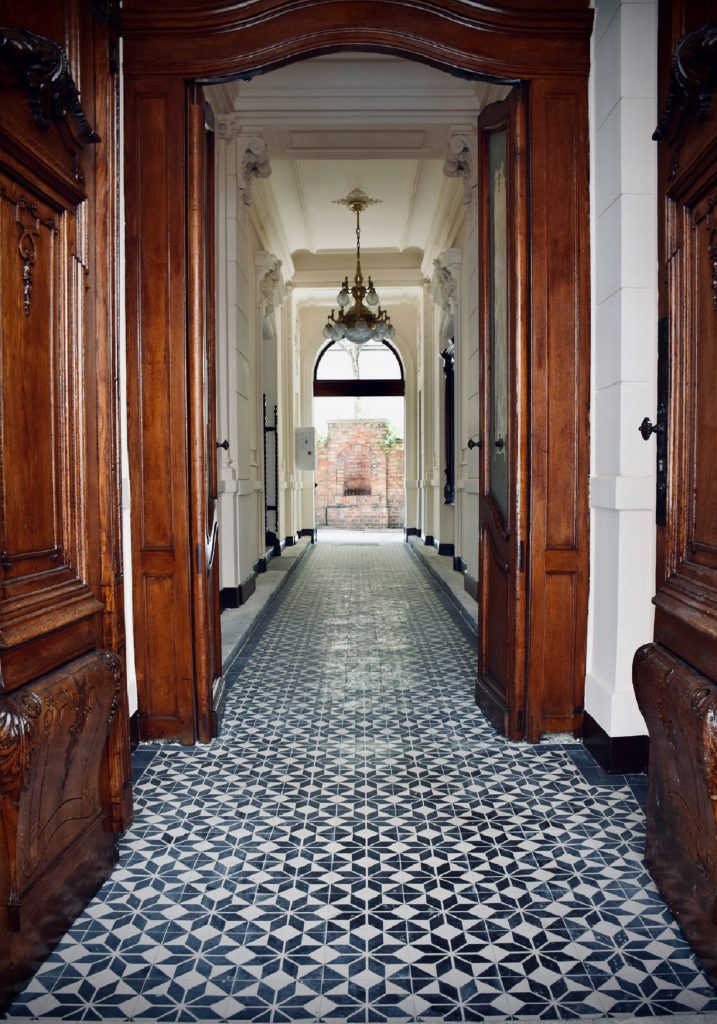
Excess mining is becoming a primary environmental concern in India. Athangudi tiles, terracotta tiles, kuddahpah, and yellow sandstone are a few such examples. They are made of locally accessible sand, cement, and naturally occurring oxides. Such tiles are both eco-friendly and cost-effective as:
- These tiles are hand-cast and air-dried.
- No fuel is used in the drying or any other process.
- It also provides additional health advantages, which protect our feet from heel fissures.
- It also helps to avoid joint discomfort.
- They are suited for all types of weather and can thus be used both indoors and out.
- They come in a variety of appealing colors and also give the ‘Indian Vintage’ feel.
06. Cross Roofing Solar Panels:
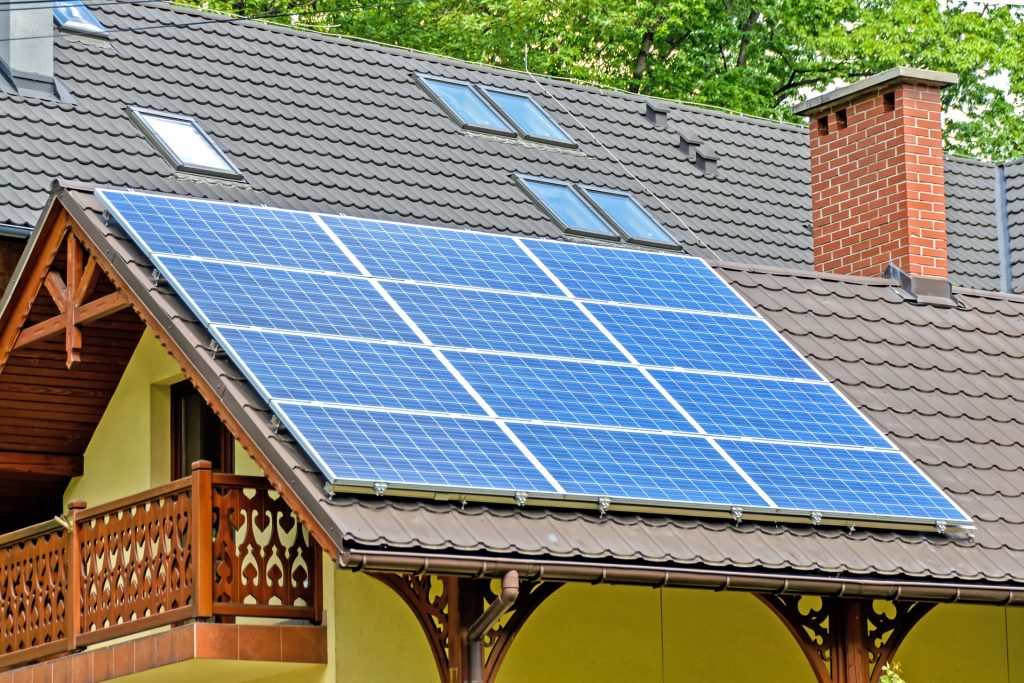
Gone are the days when you had to install dinner-table-sized solar panels on your roof to get the benefits of solar energy. Here comes the cross-roofing solar panels, which are tiny, bespoke shingles meant to fit in with regular roof tiles nearly flawlessly. These shingles are not only attractive, but they also serve as solar panels and durable roof tiles, thus, ensuring that your roof remains protected from the weather while absorbing sunlight for energy usage.
Cross Roofing Solar Panels, in the end, provide several distinct advantages, which are as follows:
- Installation is quite simple — Compared to regular solar panels, these shingles are easier to install.
- Tax-free — The typical amount for residential applications may save a family 40-60% on their power cost.
- Ideal for roofs that need repair — Solar shingles are incredibly tempting to environmentally concerned homeowners who want to re-shingle their roofs anyhow.
- Profitable if done right — You won’t have to pay for a roof and solar panels separately. Pricing for high-end roofing systems should be comparable.
If you want more detail apart from the above information on the solar panel, you can find it here –
07. Reclaimed Wood:
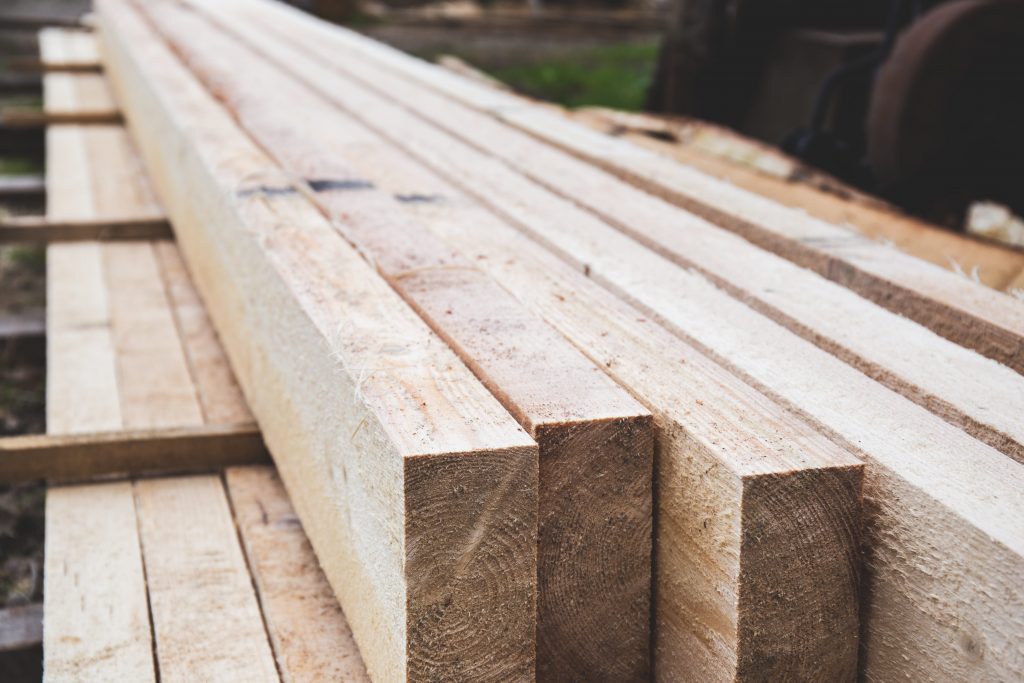
Reclaimed wood, sometimes called lumber, is processed wood that has been treated and reused from existing structures. Reclaimed timber businesses dismantle ancient structures with care, conserving the shape and integrity of beams and boards to be reused in new construction projects.
Due to its beauty, durability, and intriguing history, this is in high demand today. It may be a beautiful element and a long-lasting surface for floors, walls, tables, and other areas. Reclaimed wood is especially appealing in restaurants and bars since slow-growing species typically have rich and distinctive colors that provide a room traditional charm. On the other hand, it appeals to people who care about the environment and want to add a unique touch to their design project. Here are a few of the reasons behind the high demand for reclaimed wood:
- Reclaimed wood is rare, exotic, and difficult to get elsewhere.
- Reclaimed wood may increase the value of a home. When it comes to restoration projects, reclaimed wood can add both beauty and value to your home.
- Reclaimed wood offers various health advantages that increase the overall quality of life and improve indoor air quality.
- When compared to an interior setting without wood, reclaimed wood reduces tension and provides a calmer environment.
08. Hemp Crete:

To begin with, hemp crete is not a structural material suitable for constructing high load-bearing buildings. It is a fiber formed by the combination of a calcium carbonate-based binder and water, but even if it can’t be strong construction material, it can essentially serve as an excellent insulating material made up primarily of hemp fiber.
Hemp crete, in the end, for sure provides several distinct aesthetic advantages, which are as follows:
- Hemp crete production has a negative carbon footprint, one of the most impressive features of such material.
- Next, it is mold resistant as well as moisture absorbing.
- It has exceptional acoustics. It is lighter in weight, and it is also environmentally beneficial.
- Thus, being an environment-friendly and beneficial option to biodiversity, it lowers the usage of pesticides, resulting in deep soil conditioning and a significantly lesser carbon footprint
Also look here –
09. Cork:
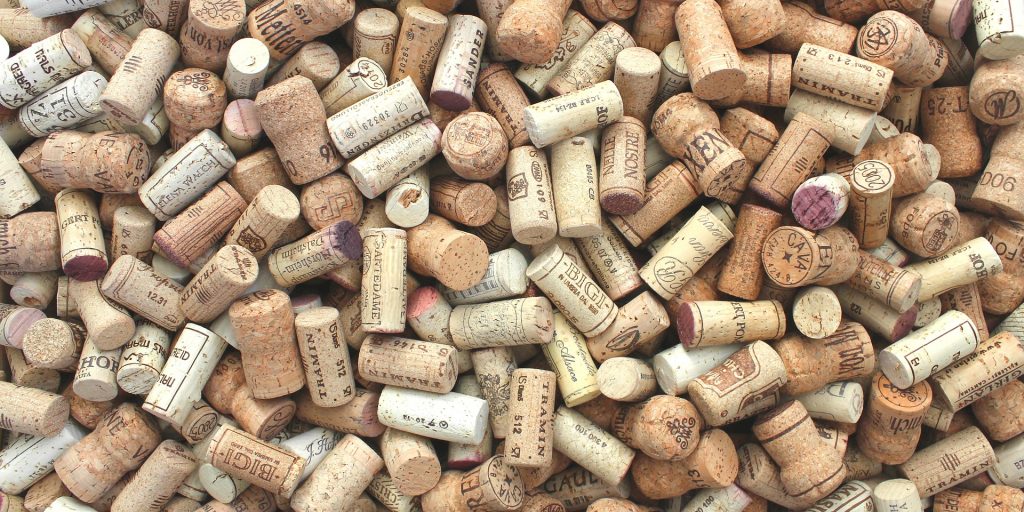
A typical tree provides several hundred kilograms of cork and can survive for many generations. Highly trained persons use particular axes to remove the bark from the tree in pieces, a centuries-old manual technique.
Cork is the only tree whose bark can renew after each harvest, leaving the tree intact. It is unquestionably a renewable ecosystem building material and many of its advantages are as follows:
- Cork flooring has grown increasingly popular in homes and business settings in recent years due to its eco-friendliness.
- Cork, one of the most environmentally friendly building materials, is harvested without harming the tree. Furthermore, each tree’s bark can be peeled up to 20 times during its life cycle.
- Cork is not only very renewable, but it also has hypoallergenic characteristics. It is fire resistant, and is liquid-resistant.
- Cork is naturally antimicrobial, thus making it san excellent choice for bathrooms and kitchens.
Cork is an environmentally friendly and long-lasting building material. Because of its attractiveness, it can be used in interior design. However, there are advantages and disadvantages to using a corkboard as with any material. Before you choose, look more about it here –
10. Bamboo:

The incredible flexibility of bamboo is not a mystery at all. Bamboo can be moulded into various construction components.
Sustainable bamboo is an excellent choice for mattresses, couches, tables, and chairs. Textured bamboo panels provide interest to the walls, ceilings, and sides of breakfast bars and cupboards. Bamboo, like wood, must be dried and treated after harvesting to protect it from pests and optimize its capabilities as a construction material. Bamboo construction has a unique combination of advantages that standard building materials do not have. Here below are only a few:
- It is a long-term and sustainable choice.
- It’s good for the environment.
- It’s biodegradable.
- It may be used to build sturdy constructions, including schools, hotels, residences, and even bridges. It is even said to serve as an earthquake and hurricane-resistant material.
11. Straw Bales:
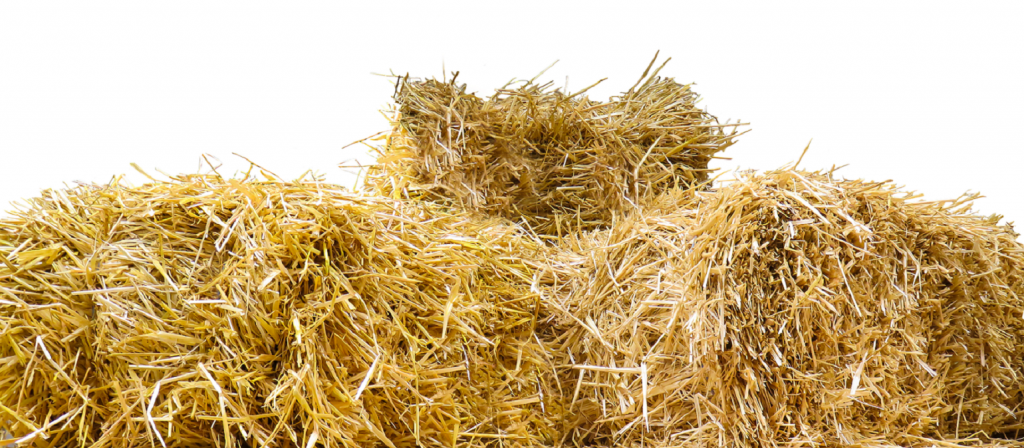
The requirement to create structures with feasible low-cost materials has become a need of the hour. With this in mind, straw bale is a material that satisfies these criteria. Straw-bale construction is a type of structure that employs straw from grains, including wheat, rice, rye, and oats, as insulation.
It has been used as a wrap on the exterior of old, poorly insulated houses or over the interior of significant commercial buildings like warehouses to increase energy efficiency significantly. The key advantages of this material are listed as follows:
- Straw bale construction is a sustainable building technology that uses straw as a renewable and readily available material.
- Excellent insulation characteristics.
- It is generally inexpensive and easy to obtain from agricultural by-products.
- The advantage of straw bale construction is that it is a straightforward approach for beginning builders.
- Strawbale building has attractive visual characteristics, such as thick walls that allow for window seats and shelving.
12. Grass Pavers:
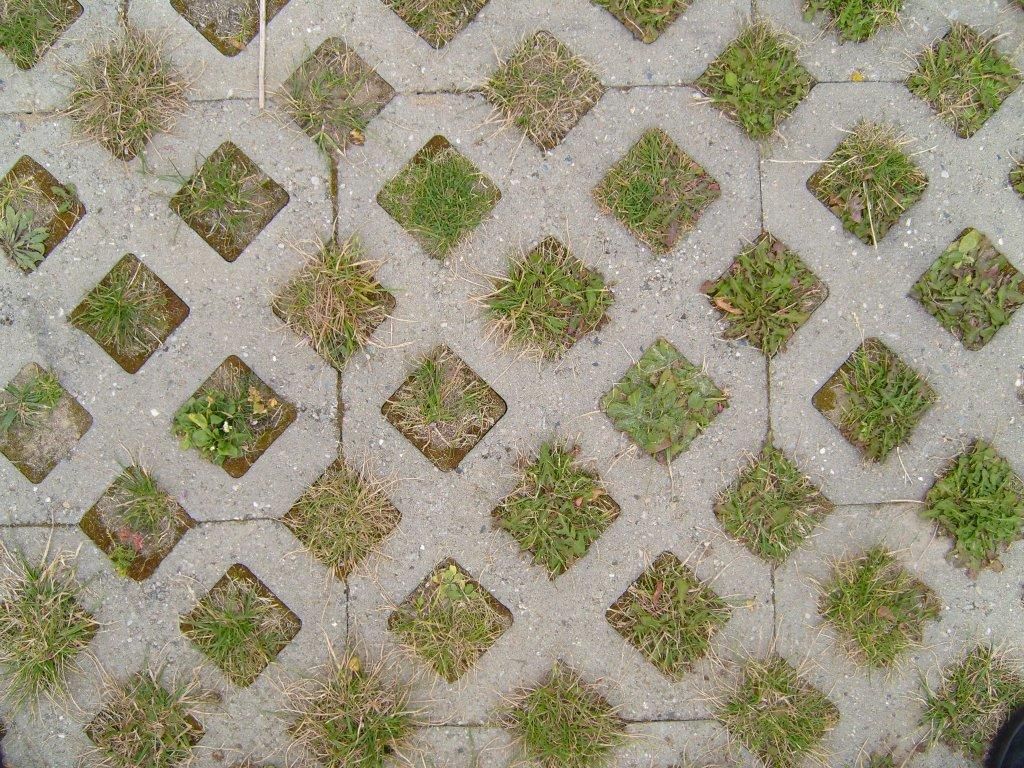
Concrete, asphalt, or a mix of the two are the most frequent materials used for surface paving. There are three types of grassed paving systems, which are best alternatives to concrete:
- Steel reinforced concrete is used in poured-in-plastic systems like Bormanites Grasscret.
- Like poured-in-place concrete, precast concrete pavers provide solid structural support;
- A substantial proportion of the systems are made of recycled plastic pavers.
Permeable grass pavers, in the end, provide many distinct aesthetic advantages, which are as follows:
- They produce a completely functioning surface free of the risk of cracking, rotting, or other maintenance problems.
- It is also a solution if the gradient of your land causes the accumulation of mud and other natural detritus in specific areas.
- In case you want many trees or plants on your land, this approach will allow your root systems to develop to their maximum potential.
- They don’t address all of the issues we confront due to our constructed environment, but they are a step in the right direction.
GO GREEN! We must understand that the planet does not belong to us but to the generation to come! To guarantee that our grandchildren live in a world worth living in, we must use sustainable resources wisely. Living in harmony with the nature is the way forward and all of the green materials listed here will have a positive impact.
Choose wisely. Eco-friendly building materials have the potential to enhance our planet’s health and overall well-being dramatically. As a result, it will be one of the most environmentally friendly alternatives in the future when compared to conventional concrete.
Let’s Go Greens.
Thanks for reading. In this article, we talked about eco-friendly alternatives to concrete. There are also a few other popular eco-friendly building materials that can aid in the construction of green buildings to save the environment and natural resources. Just go through the following link to know –
8 Eco Friendly Building Materials Utilised in Green/Sustainable Buildings!
Image Courtesy: Image 9
Author Bio
Aditya-Prabha Media



































